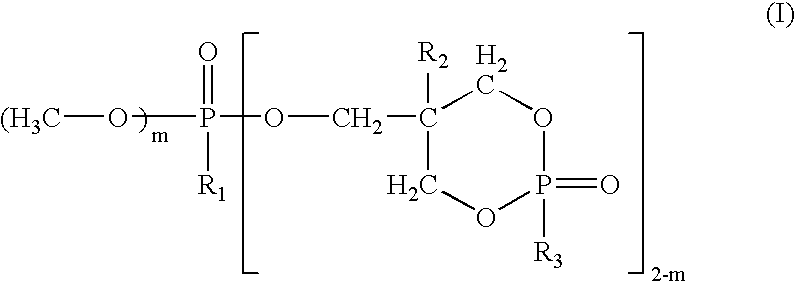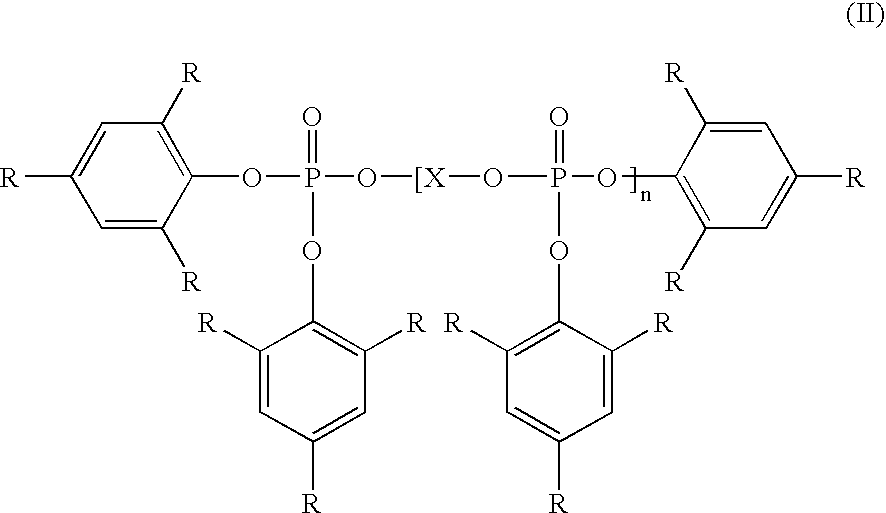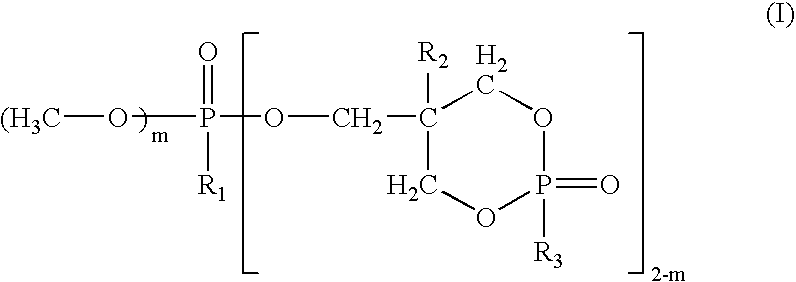Flame retardant polymer composition
a technology of flame retardant polymer and composition, which is applied in the field of flame retardant rubber modified aromatic vinyl composition, can solve the problems of deterioration of heat resistance and resin transparency, restricted application of abs resin, and toxic resin
- Summary
- Abstract
- Description
- Claims
- Application Information
AI Technical Summary
Benefits of technology
Problems solved by technology
Method used
Image
Examples
examples
[0065] Preparation of the components of the polymer compositions of Examples 1-4 and Comparative Examples 1-2 are as follows
Rubber Modified Aromatic Vinyl Resin
[0066] (a1) Rubber Grafted Copolymeric Resin
[0067] To a 10 L glass reactor provided with a agitation impeller, thermometer, mantle, reflux condenser, 50 parts by weight of polybutadiene latex (solid content), 10 parts by weight of methylmethacrylate, 3 parts by weight of styrene, 1 parts by weight of acrylonitrile, 120 parts of deionized water, 0.5 parts of potassium stearate, 0.3 parts by weight of t-dodecyl mercaptan, and 0.2 parts by weight of cumene hydroperoxide were added and mixed. The mixture was heated to the temperature of about 60° C. To the reactant, 0.003 parts by weight of ferrous sulfate, 0.2 parts by weight of sodium sulfoxylate formadehyde, and 0.1 parts by weight of ethylenediamine tetraacetate were added to the reactor and polymerized for 1 hour to reach to the conversion rate of 90%.
[0068] Then, 0.4 p...
examples 1-4
[0073] The components as shown in Table 1 were mixed and the mixture was extruded at 180-250° C. with a conventional twin screw extruder in pellets. The resin pellets were dried at 80° C. for 3 hours, and molded into test specimens using a 6 oz injection molding machine at 180-280° C. and mold temperature of 40-80° C.
[0074] The flame retardancy of the test specimens was measured in accordance with UL94VB with a thickness of 1 / 10″. The impact strength was measured according to Izod impact strength ASTM D-256 A (⅛″ notch) at 23° C. The transmission coefficient of light was measured by use of color computer of Suga Instrument of Japan with a 10×10×3 mm specimen.
PUM
| Property | Measurement | Unit |
|---|---|---|
| particle size | aaaaa | aaaaa |
| temperature | aaaaa | aaaaa |
| temperature | aaaaa | aaaaa |
Abstract
Description
Claims
Application Information
 Login to View More
Login to View More - R&D
- Intellectual Property
- Life Sciences
- Materials
- Tech Scout
- Unparalleled Data Quality
- Higher Quality Content
- 60% Fewer Hallucinations
Browse by: Latest US Patents, China's latest patents, Technical Efficacy Thesaurus, Application Domain, Technology Topic, Popular Technical Reports.
© 2025 PatSnap. All rights reserved.Legal|Privacy policy|Modern Slavery Act Transparency Statement|Sitemap|About US| Contact US: help@patsnap.com



